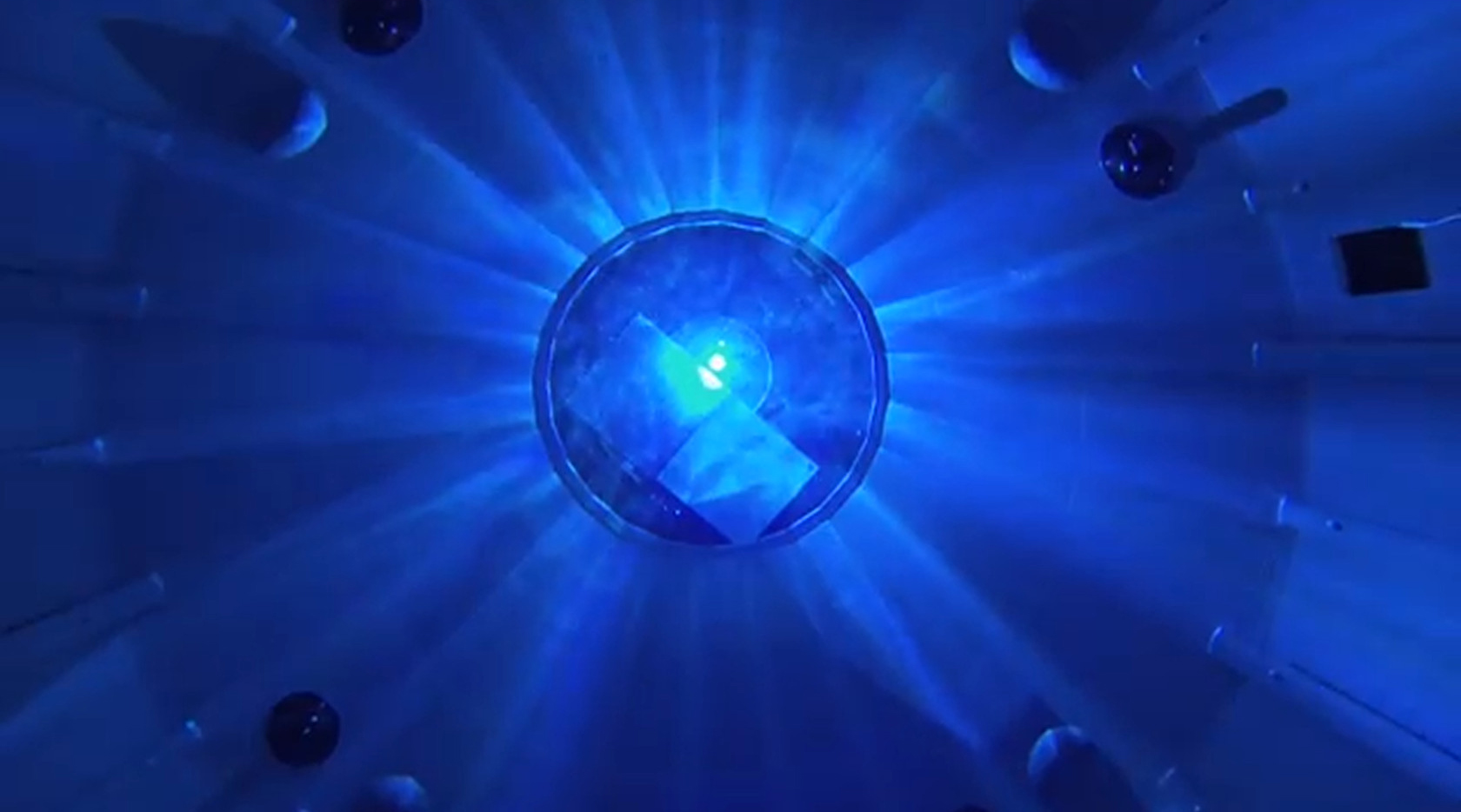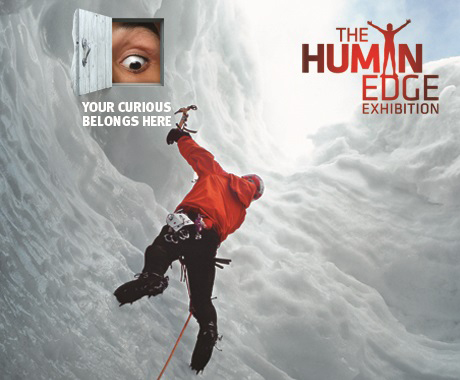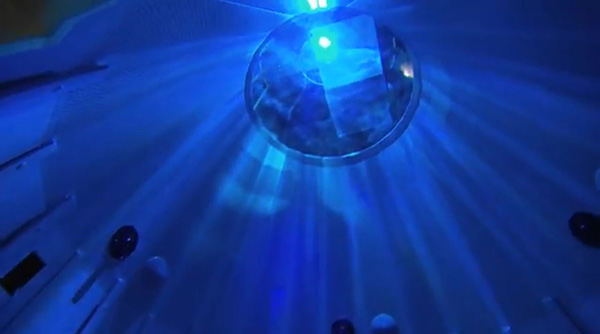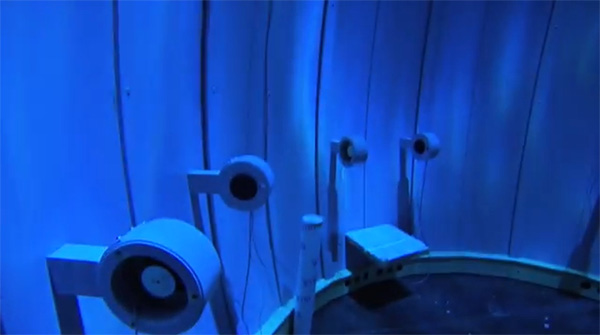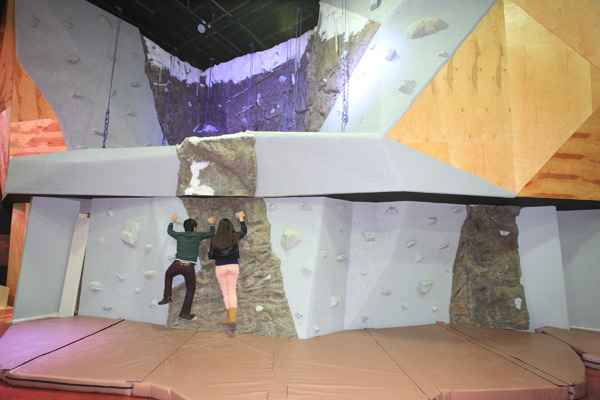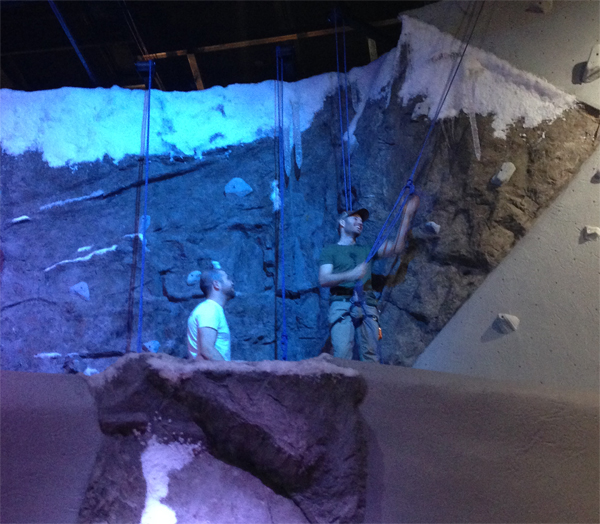The Ontario Science Centre has opened a new hall called The Human Edge with 80 exhibits that explore the remarkably plastic nature of your body, the way it can adapt and change to the demands we put upon it in a lifetime. This week on Technical Knockout we’re looking at just two of those exhibits, a pair of interactive spaces that simulate what can happen when you push your body beyond its limits.
One Breath
Mandy-Rae Cruickshank Krack is a world champion freediver, capable of swimming in the depths of the ocean without breathing. She doesn’t hold her breath so much as enter a dolphin-like state where the need to breath simply vanishes. It’s a trick she says we’re all born with, we all have mammalian diving reflexes, but through training and conditioning she’s brought hers out to use to the extreme.
She’s helped design an interactive diving bell to take you through one of her dives to 88 metres. The acoustic chamber uses sound to reproduce the spatial depths of the ocean, the sense of calm that takes over a dive, while ambient lighting systems change to match the descent and fill your senses with the “deep depth blue” that consumes a diver’s sight.
Passenger seats equipped with headrest speakers deliver closer-proximity audio, offering up the sounds that rush your ears while the inner narrative that Mandy has with herself is used to guide you through the experience. You can try holding your breath during the dive, but with the journey lasting more than three minutes, you might not make it.
From the visitors I spoke with at the opening, the interactive diving bell known as One Breath is the new favourite exhibit at the Science Centre.
The changes Mandy-Rae makes to her physiology are remarkable. Even before she enters the water her spleen begins to contract, increasing oxygen-rich red blood cells into her body. Her heart-rate slows considerably while her circulatory system withdraws blood from her extremities to her centre core. On really deep dives her body will react by transferring plasma, the clear sticky substance within your blood, into her lungs to help resist the compression of the depths.
“You feel like you’re an ice cube melting into the water,” Mandy-Rae tells me. “You just feel like you belong down there. You don’t need air, you don’t need all that stuff. You just need your fins and your mask, and you’re free.”
Given that she can only enjoy the depths a few minutes at a time, I asked her why it’s all worth it.
“The after effect. I love being on the dive and the sensation of “just being” in the water is great, but being able to say that you worked your butt off for six months and hey, look what you’re able to achieve!”
Mandy-Rae reaching target at the Grand Cayman Nationals
Mandy-Rae raised a few eyebrows and drew some scientific curiosity when she performed one her dives while pregnant.
“It’s kinda neat having researchers come to me, asking me what I went through on the pregnancy and it seems like it was just a normal, everyday pregnancy. (My daughter) is perfectly healthy and she’s an amazing swimmer too.”
The Climbing Wall & Decision Maze
Initially mountain climbing is about overcoming heights and the agility and endurance that demands, but once you get above 8,000 metres, you enter a “death zone” of thin atmosphere where the challenges to breathing make it similar to diving or surviving in outer space.
Angus Murray at Mount Everest
As the 50th Canadian to ascend Mount Everest, Angus Murray helped design a pair of interactive spaces for the hall that speak to the physical conditioning and challenges involved.
“Because you’re not getting as much oxygen you don’t think clearly,” explains Angus. “The challenge with that is you need to manage it. You can function with less oxygen, but there’s a line you’ll cross where you’ll start making bad decisions. You’ll say ‘Oh gosh, I’m just going to stop here for a rest. I’m just going to wait a little longer because I’m really tired and cold’. Often those people don’t wake up.”
Angus has helped design a special climbing wall where staff will encourage you to try to make the ascent wearing the gloves, winter coat, and climbing gear of extreme expeditions (you can pass on the gear, but it’s kind of the point).
Initially the wall begins like any you’ll find at a fitness centre, but once you reach the upper part it begins to skew at challenging angles, the climbing ropes are brought out and a collection of special effects involving lights, fog, and sounds become active to simulate the disorienting conditions.
“Your body is stronger than you think it is and is capable of more” says Angus, who sees the climbing wall as a way for people to experience what their bodies can do. “When you’re in that moment, it’s like a zen-like state, that all you’re thinking about is where that left foot is going and, literally, there’s nothing else in your mind. You’re not thinking ‘Am I hungry, am I scared, am I thirsty?’ ‘What about my mortgage?’ You are totally focused on that one moment and movement, it’s so pure.”
Since not everyone may be up for wall climbing, there’s also a set of interactive stairs to the top called the Decision Maze. As you go up the stairs you’ll get to make a series of do-or-die decisions that all climbers face.
“Do I pee now? Do I not pee? Do I drink water? Do I clip in here?” says Angus going through examples. “Look, someone’s in trouble, do I help them? Those are real-life decisions that people have had to make and then you see what happens. Do you live, do you die? Do you get to the summit or not?”
If you live, then hopefully you’ll be inspired to explore your own limits. Both interactive spaces are part of The AstraZeneca Human Edge, a new 10,000 square foot permanent exhibition hall now open at the Ontario Science Centre.

